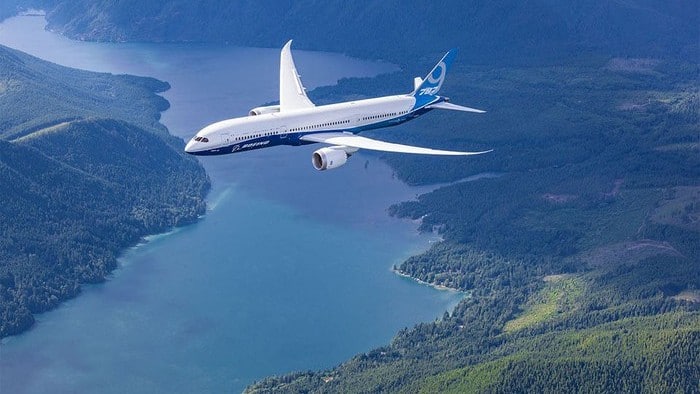This article was originally published on Fool.com. All figures quoted in US dollars unless otherwise stated.
Boeing (NYSE: BA) issued its annual forecast for the commercial jet market in October. Not surprisingly, the aerospace giant reduced its estimate for global aircraft deliveries over the next 20 years – and especially for the current decade – relative to its 2019 outlook.
Despite slashing its long-term forecast, Boeing still may be overestimating the level of aircraft demand between 2020 and 2029. However, the scariest thing in its updated outlook is that even if its demand forecast is accurate, Boeing has virtually no path to getting back to pre-pandemic production levels during the current decade.
What the forecast says
Boeing estimates that manufacturers will deliver 18,350 new aircraft between 2020 and 2029, including 1,240 regional jets: a market segment that Boeing and Airbus (OTC: EADSY) don't participate in. That puts the estimated addressable market for Boeing and its chief rival at 17,110 aircraft over the 10-year forecast period.
Unsurprisingly, Boeing expects single-aisle mainline jets (like the Boeing 737 MAX) to continue to account for the vast majority of demand, with 13,570 deliveries between 2020 and 2029. Wide-body passenger jets and freighters represent the other 3,540 projected deliveries.
Most of these deliveries are spoken for
The scary thing for Boeing is that most of these projected deliveries have already been sold – and mostly not by Boeing. This is particularly true for narrow-bodies: the high-volume segment of the market.
In the first 10 months of 2020, Airbus delivered 355 single-aisle jets. It ended October with an enormous backlog of 6,517 unfilled narrow-body orders across its A220 and A320 families. Airbus' 2020 deliveries and current firm orders account for 51% of what Boeing projects will be delivered over the entire decade in the single-aisle market. Meanwhile, due to the 737 MAX grounding, Boeing has only delivered 13 narrow-bodies year to date (mainly military variants). Its backlog for the 737 family – its only entry in the single-aisle market – totals 3,365 orders.
Furthermore, while Boeing and Airbus dominate the commercial jet market, they aren't the only players. Russia's Irkut had 175 firm orders for its MC-21 jet as of September. Meanwhile, China's COMAC claims to have 815 orders for its C919 jet, although only around 300 of those appear to be firm orders. Both new models had their first flights in May 2017, and both manufacturers expect to begin deliveries in late 2021, although it's certainly possible that the timeline will slip to 2022.
In short, more than 10,700 single-aisle jets have been delivered in 2020 or are on firm order today. The 737 MAX accounts for less than a third of that figure. Meanwhile, fewer than 3,000 additional single-aisle jets would need to be ordered to meet the market's projected demand through 2029.
Unless Boeing secures the lion's share of those orders – which would mark a big turnaround from recent history – it is virtually locked into its current position as a distant No. 2 in the most important part of the commercial jet market.
To be fair, Boeing is in better shape for wide-bodies, where it still has leading market share. It has delivered 98 wide-bodies this year – including passenger, freighter, and military variants – compared to just 58 deliveries for Airbus. Boeing ended October with 910 outstanding firm wide-body orders, versus Airbus' 860. However, wide-bodies (including freighters) will account for just 20% of aircraft deliveries this decade, according to Boeing's forecast. Moreover, that projection could still be too generous.
A new normal for Boeing
In 2018, Boeing delivered 806 commercial jets: 580 737s and 226 wide-bodies. Meanwhile, Airbus delivered 800 jets: 646 narrow-bodies and 154 wide-bodies.
Airbus' current narrow-body backlog equates to an average of more than 700 annual deliveries between 2021 and 2029: more than what it delivered in 2018. Boeing's current backlog wouldn't even support an average of 400 annual 737 deliveries. Since there are potentially fewer than 3,000 additional orders up for grabs for narrow-body deliveries this decade, the aircraft manufacturer would need to capture a disproportionate share of that business to get back to building nearly 600 737s annually.
Getting even 50% of the incremental order volume could be challenging. Airbus' A220 is smaller than the smallest 737 MAX model, giving it lower trip costs, while the A321XLR has significantly more range than any 737 MAX. Thus, Airbus addresses market segments that Boeing doesn't participate in today. Additionally, Irkut and COMAC are virtually guaranteed to capture additional orders because of their status as national champions. COMAC in particular is poised to tap into the enormous Chinese airline market.
As for wide-bodies, even if Boeing's forecast is accurate and it maintains a modest market share advantage, annual deliveries would remain firmly below its 2018 tally. Barring some unexpected event that causes a rapid shift in the market share landscape, Boeing will struggle to make a full recovery from the double-whammy of the 737 MAX grounding and COVID-19 pandemic.
This article was originally published on Fool.com. All figures quoted in US dollars unless otherwise stated.









